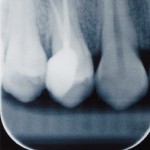
Perforation of the tooth root can occur as a result of mechanical, iatrogenic or pathological reasons. Endodontics and restorative treatment are common causes and a range of dental materials have been suggested for perforation repair with various success rates being reported. The aim of this review was to assess the published treatment outcome of repaired root perforation and to identify any preoperative factors that may influence the outcome of perforation repairs.
Methods
Searches were conducted in the PubMed, Embase, Scopus and Web of Knowledge databases. Studies with a follow up period of at least 12 months in permanent teeth detailing specific evaluation criteria and including radiographic and clinical findings at follow up were considered. Two reviewers independently selected studies and abstracted data.
Results
- 17 studies were included, 11 respective cohorts and 6 prospective studies
- Sample size ranged from 12 to 100 (median =19)
- Meta-analysis (10 studies) found an overall success rate (all repair materials) = 72.5% (CI; 61.9%–81.0%)
- Meta-analysis of 5 studies using MTA found an overall success rate = 80.9% (CI, 67.1%–89.8%)
- Two factors were shown to significantly affect the success rate of nonsurgical repairs;
- Maxillary teeth compared to mandibular teeth OR = 2.33(CI; 1.11–4.87; P = .025)
- Absence of a preoperative radiolucent area adjacent to the perforation site OR=2.57 (CI; 1.15–5.75; P = .021)
Conclusions
The authors concluded:
A reasonably favourable prognosis may be obtained by repairing the perforated root non-surgically, with an overall chance of success of about 73% for all types of repair materials combined. The use of MTA material may further enhance the success rate.
Comments
The authors have searched a broad range of databases looking for studies to address this question. However, only 6 of the 17 included studies were prospective and there were no randomised controlled trials. The included studies involved relatively small sample sizes and the authors have not conducted a quality or risk of bias assessment of the studies. While the meta-analysis suggest good success rates the findings should be interpreted with some caution, as retrospective studies are more prone to bias and the included studies are small. This means that it is likely that the findings will overestimate the result and further high quality studies are needed to clarify the findings.
Links
Siew K, Lee AH, Cheung GS. Treatment Outcome of Repaired Root Perforation: A Systematic Review and Meta-analysis. J Endod. 2015 Sep 9. pii: S0099-2399(15)00636-6. doi: 10.1016/j.joen.2015.07.007. [Epub ahead of print] Review. PubMed PMID: 26364002

Root perforation repair: Review suggests good success with non-surgical approach http://t.co/5eVxGxlkzi
Review suggests good success with non-surgical approach for root perforation repair http://t.co/5eVxGxlkzi
Non-surgical approach to root perforation review had good success rates http://t.co/5eVxGxlkzi
Don’t miss- Root perforation repair: non-surgical approach has good success suggests review http://t.co/5eVxGxlkzi